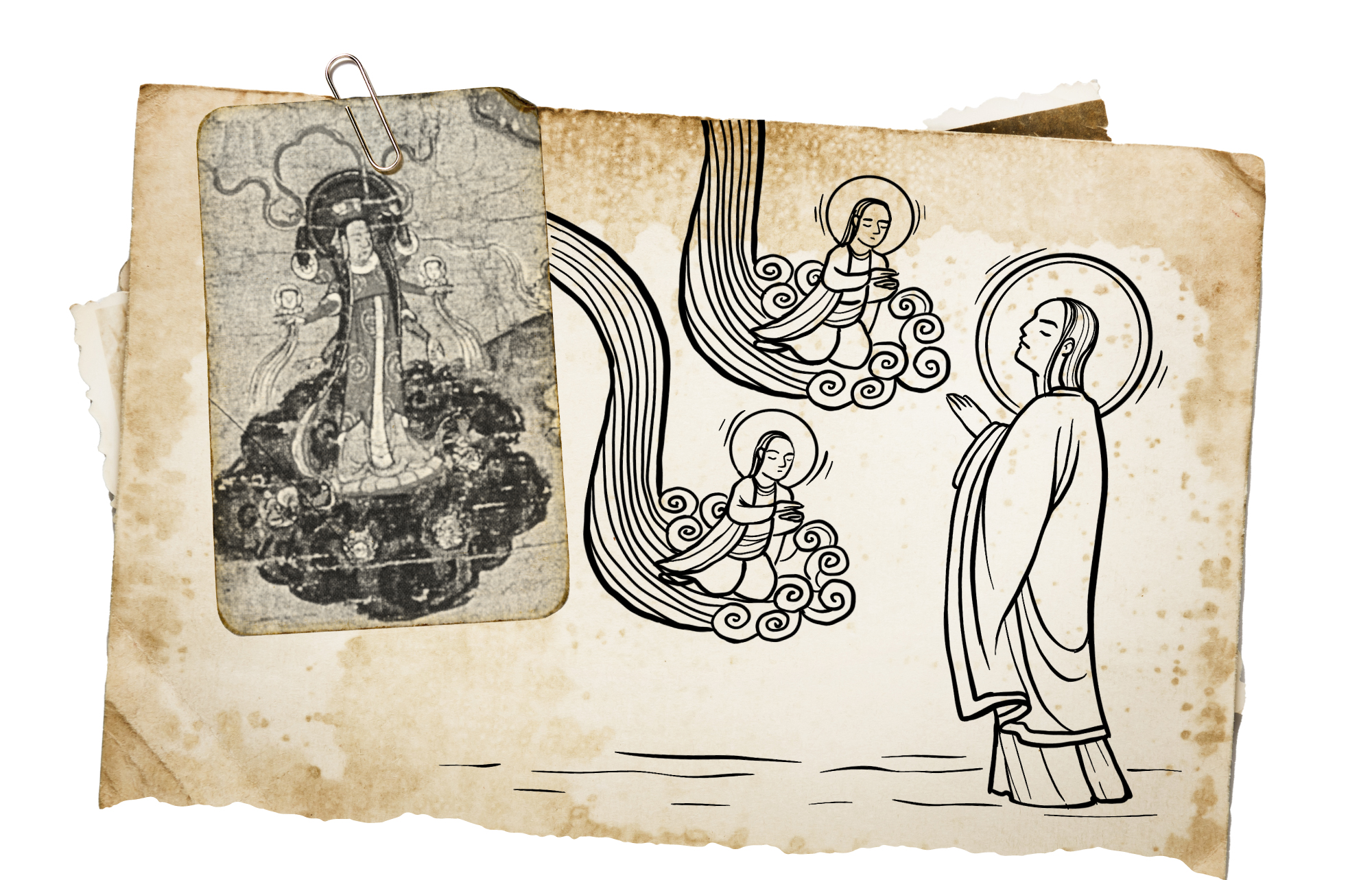
It had its own Gospel,
The "Imāmiyya" started with the Persian belief after killing the founder of Manichaeism in the second century AD
The Persians believe that the Manichaean belief is the second basis for their ancient beliefs that they cherish after Zoroastrianism, and which are still to this day influencing their rituals and beliefs in their culture. Manichaeism, in its simplest definition, is: a dual religious movement that worships and follows both light and darkness. It emerged during the third century AD in Persia, and was considered a religion in its own right, despite its imitation of Christianity and Judaism.
Manichaeism has been referred to in various Greek, Coptic and Persian scriptures, which documented its historical period. Manichaeism, as it was greatly influenced by the Christian religion, is considered by some to be an abstract heresy derived from a theistic religion, so it is difficult to consider it an independent religion from other religions. However, its doctrinal and historical connection to the Persians, and their belief in it, whether as a belief, ritual, or culture; makes it independent with different religious aspects, even if it is based on the legacy of the theistic religions.
According to what Hussein Iyad describes in his book The Doctrinal Ideology of the Manichaean Religion: “Manichaeism is one of the religions that emerged in the third century AD, and had a great influence on the beliefs and minds of people at the time, and the beliefs and concepts of this religion are still known among many residents of Southeast Asia and Iran, knowing that it began in the land of Mesopotamia and in the city of Babylon in particular, due to the status of this city and its civilized development”.
The founder of Manichaeism had his own style, in which he collected many concepts and perceptions that he borrowed from the theistic religions, as well as from non-theistic ones, and mixed them together. He then organized his own constitution for his followers and imitators to organize and conduct social life in accordance with Persian culture, and this may be the quotation that Mani worked on; one of the things that negatively affected the spread of his faith in his time, especially that most of his followers were Persians, while other nations did not look at him more than as an imitator of others.
The importance of studying Manichaeism emerges from its intellectual sources from which it drew its ideological ideas and the constitution of its work, the most prominent of which were Christianity, Zoroastrianism and Buddhism, in addition to other intellectual movements. Therefore, from the historical side, it was a study of the life of its first founder and his origins, as well as the religious beliefs and concepts and the prophets who influenced his personality, which prompted him to adopt these ideas and quote them directly and indirectly, that had a clear impact on his beliefs and concepts, as well as his theories about creation, teachings, and worship followed by his imitators and followers, as well as his most important writings and letters.
As for his reason for quoting and imitating the theistic religions; It is due to the fact that Mani was born in Babylon and raised in a mixed Jewish-Christian environment, and spent the beginning of his youth in Mesopotamia. At the age of twenty he began to spread his new religion in an attempt to create a universal religion acceptable by all people, not limited by a mystical education based on indoctrination. At the age of eleven, he began developing some new ideas in his mind, opposing many of the religious beliefs in his community, such as the Quartet Gospels and Paul’s letters.
As soon as he became twenty-four years old, he claimed that a revelation had come down to him instructing him with divine teachings, which formed the basis of the Manichaean religion and deemed himself the Holy Spirit and the mediator preached by the Prophet Jesus, and presented himself as a new prophet during the inauguration ceremony of the Sassanid King Shapur I, deeming himself part of the chain of prophets and the heir of Zoroaster in Persia, Buddha in India and China, and Jesus Christ in the West, and that he is a universal prophet of all people and the last of the prophets.
Thus, Mani aimed to try to merge other religions by establishing a link between his religion and other Christian, Buddhist and Zoroastrian religions. Therefore, Mani considers Buddha, Zoroaster, and Jesus as his ancestors. He wrote several books, including his Gospel, which he wanted to be a perfect copy to the Gospel of Jesus, son of Mary, peace be upon him. There is a similarity in the narration of the killing of Mani with the narration promoted by the Christians claiming the killing of the son of Mary, peace be upon him.
Mani also promoted himself as one of the disciples of the Prophet Jesus peace be upon him, but the Christian Church rejected such claim, and considered him a heretic and his religion as some sort of heresy. Despite that, Manicheans obtained the support of a number of high-ranking political figures in the Persian Empire, in which they found a national belief appealing to its people, so Mani began to send missionary messages that reached Turkestan, India and Iran to spread Manichaeism in various parts of the ancient world very quickly, until it reached Rome in (280 AD), and Manichaean houses of worship emerged in it in (312 AD) during the reign of Pope Miltiades, while it arrived in Egypt in (244 AD) and became known to the people of southern France in the year (352 AD).
One of the most prominent beliefs of Manichaeism is reincarnation, which is a concept as old as heresies. It tries to deny the resurrection in some religions, so those who can’t accept the truth resort to such concept because it gives them ready solutions to the idea of resurrection, and Manichaeism is not far from such goal. The book “Non-Theistic Religions and Their Sacred Sources from an Islamic Point of View”, says the following on reincarnation as part of the main concepts in the Manichaean religion:
The heresy of reincarnation emerged in the imaginations of some philosophers who said that the world is old, and that resurrection is impossible after death, and they supported the idea of reincarnation of souls into different bodies of various forms, such as the reincarnation of the human soul to an animal or the soul of an animal to a human being, as they claimed that whoever commits a sin will be punished for that sin in another form, and the same applies to rewards. The Manicheans also supported another idea of reincarnation, relying on the teachings of Mani, who believes that the souls that depart from bodies are of two types: the souls of the righteous, and the souls of the misguided. As for the souls of the righteous, if they leave their bodies, they raise from the daylight column to the superior light that is above the universe, and remains in that world with continuous pleasure. As for the souls of the misguided. if they leave their bodies and want to catch up to the superior light, they will settle in other bodies.”
There is a great similarity between the story of the Christians and their claim of the crucifixion of Christ, and the story of Mani’s followers who died at the hands of the Persian religious establishment in prison before being killed and crucified based on the ruling issued by the Persian Emperor Bahram I. However, Mani’s death in (277 AD) had a positive effect on increasing the spread of Manichaeism even further, which increased the persecution and repression of his followers at the hands of Emperor Bahram II, where he killed the missionary Seys and pursued the Manichaeans wherever they were, and Emperor Diocletian followed his campaign in the year 302 AD when he issued a decree ordering the subjugation of the Manichaeans by force, and massacres were committed against them in various countries during the reign of Theodosius I, who ordered the killing of all the Manichaean clergy in 382 AD.
The followers of Manichaeism claim that Mani rose to the Heavens of Light, but before his rise he appointed an imam after him on his behalf as it is common in the culture of the Persians today. The imam used to perform rituals until he died, and the imams used to practice the teachings of the religion one by one, and there was no difference in practices, and they remained on this accord until a group emerged from them known as the “Dinaburi” and they challenged their imam, and refused to obey him. It was known among them that an imam shall not be appointed except in “Babylon”, and any other imam is considered a false one.
In conclusion, it is noted how the idea of the Imāmiyya and its spreading through was only a mere Persian culture inherited from Islam since the third century AD after the emergence of Manichaeism.
The Manichaeans claimed that Mani left someone on his behalf before ascending to Heaven, and his successor must be a Babylonian.



- Hussein Iyad Muhammad, The Doctrinal Belief of the Manichaean Religion: A Study of its Origins and Influence by Zoroastrian Beliefs and Christianity (Baghdad: Babylon University, 2015).
- Hussein Atwan, Heresy and Populism in the First Abbasid Era (Beirut: Dar Al-Jeel, d.).
- Jeuwaid Negrin, Mani and Manichaeism: A Study of the Heretical Religion and the Life of its Founder (Damascus: Dar Hassan, 1985).
- Firas Al-Sawah, Encyclopedia of the History of Religions: Zoroastrianism, Manichaeism, Judaism, Christianity, 4th Edition (Damascus, Dar Al-Takween, 2017).
- Wael Suleiman, The History of Manichaeism (Aragic Platform, 2019).
